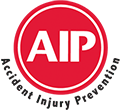The Classroom course is designed to educate employees on the required WHMIS program for their workplace including worker education, workplace labeling and material safety data sheets

The Workplace Hazardous Materials Information System (WHMIS) is Canada's national hazard communication standard. The key elements of the system are hazard classification, cautionary labelling of containers, the provision of (material) safety data sheets ((M)SDSs) and worker education and training programs.
The basis for hazard classification and communication in WHMIS is changing. With the incorporation of the Globally Harmonized System of Classification and Labelling for chemicals (GHS) in WHMIS, the hazard classification and communication requirements of WHMIS have been aligned with those used in the United States and other Canadian trading partners.
WHMIS is in a period of transition between two hazard communication regimes - WHMIS 1988 and WHMIS 2015 (which incorporates the GHS).
Chemical hazards and toxic substances pose a wide range of health hazards (such as irritation, sensitization, and carcinogenicity) and physical hazards (such as flammability, corrosion, and reactivity).
WHMIS is designed to ensure that information about chemical and toxic substance hazards in the workplace and associated protective measures is disseminated to workers.
In order to ensure chemical safety in the workplace, information about the identities and hazards of the chemicals must be available and understandable to workers.
Chemical manufacturers and importers are required to evaluate the hazards of the chemicals they produce or import, and prepare labels and Material Safety Data Sheets to convey the hazard information to their downstream customers;
All employers with hazardous chemicals in their workplaces must have labels and Material Safety Data Sheets for their exposed workers, and train them to handle the chemicals appropriately.
The training for employees must also include information on the hazards of the chemicals in their work area and the measures to be used to protect themselves.
AIP Safety offers an extensive WHMIS program. The Workplace Hazardous Materials Information System (WHMIS) is Canada's national hazard communication standard.
The Classroom course is designed to educate employees on the required WHMIS program for their workplace including worker education, workplace labeling and material safety data sheets.
Employees will also learn about the hazards associated with the chemical products in their place of work, and how they are to be used safely.
This course has been designed to meet and exceed Occupational Health and Safety standards and is applicable to any worker who works with chemicals on the jobsite.
Upon successful completion of this course, participants will receive a 3-year certification in WHMIS
The provision of appropriate health and safety training is an integral part of all health and safety programs and is a key component of due diligence in the workplace. Employers have an obligation.
To properly train their employees and supervisors to ensure that they are competent to perform their jobs, recognize the hazards of the job and understand how to protect themselves from these hazards.
© 2025 coursetakers.com All Rights Reserved. Terms and Conditions of use | Privacy Policy